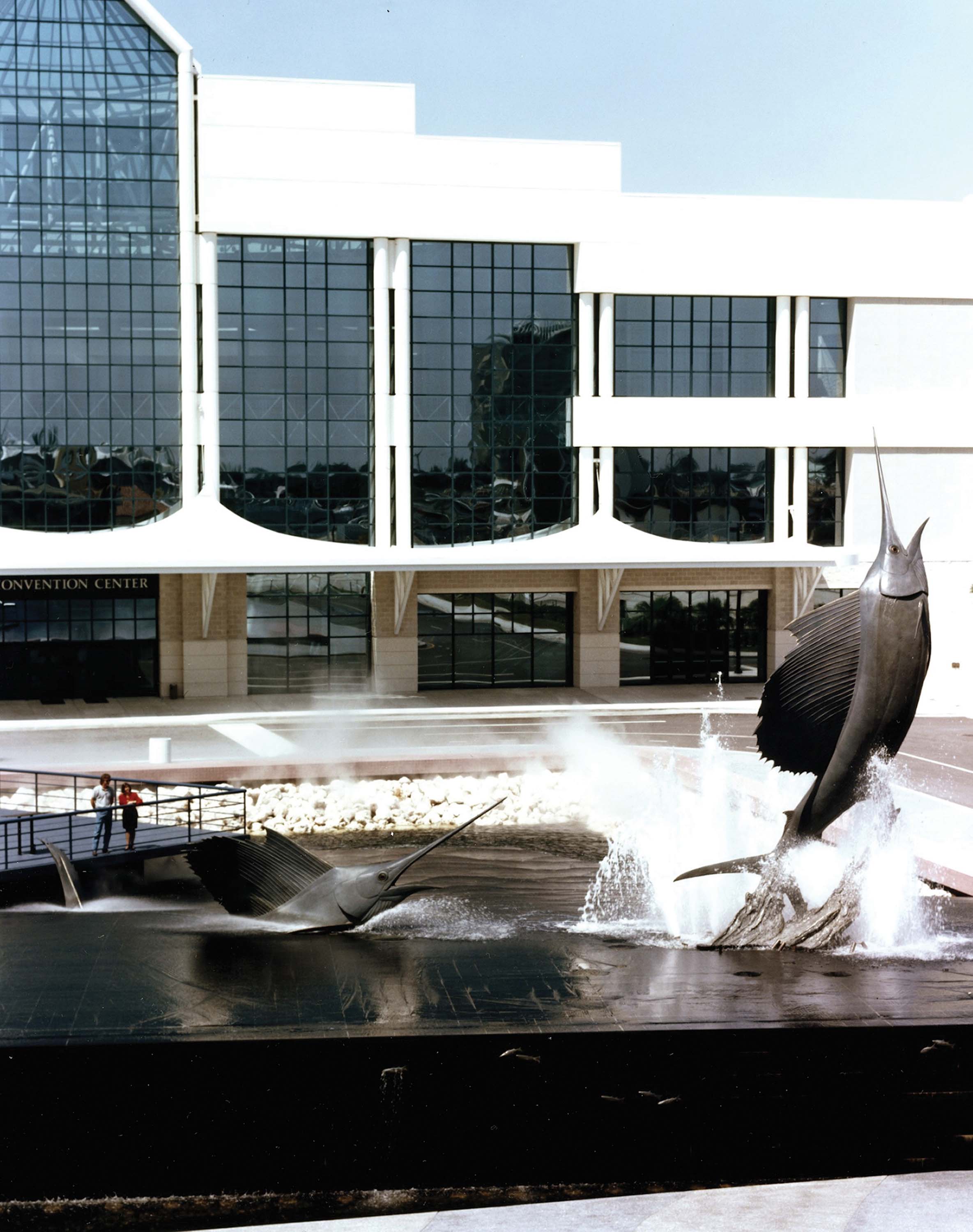
01 Feb The Monumentalist
KENT ULLBERG SMILES BEHIND A snowy-white sailor’s beard and then, like a mariner ascending to the crow’s nest of a tall ship, he scales a wall of scaffolding that towers over his cavernous studio. Aloft and alone now in the rafters, his favorite symphonies by European composers filling the air, he inspects the shadowy undercarriage of a long-extinct behemoth.
Running calloused hands along the textured trunk of a mastodon, he surveys the curvilinear sightlines of twin tusks. Soon to glisten in bronze, they flare out like protective sabers.
This massive life-size beast is Ullberg’s own interpretation, having never encountered one in the flesh, but relying upon rigorous consultation with some of the world’s leading paleontologists. The catalyst, he says, was a jumble of 120,000-year-old bones recently unearthed from the Colorado Rockies. He muses aloud about how this authentic American elephant, a casualty of time, would have navigated changing climates and predators.
Later in 2014, when Ullberg’s 19-foot Snowmass Mastodon is unveiled at the Denver Museum of Nature & Science, the event will symbolize more than breathing life back into a prehistoric icon. For Ullberg, the unprecedented commission completes a professional journey that has angled back full circle, establishing him, over the course of 40 years, as arguably the foremost creator of modern wildlife monuments in the world.
“The museum in Denver brought me to America and it was that move that altered the course of my life,” Ullberg says. “As indebted as I feel toward the museum for giving me a chance to chase my dream — and it has been a dream — it’s a great honor.”
“This is another big year for Kent within a succession of big years,” says David J. Wagner, curator of a 48-piece traveling solo exhibition, Kent Ullberg: A Retrospective. In winter 2014, it opens at the Hiram Blauvelt Art Museum in Oradell, New Jersey, along with a showing of paintings by Ullberg’s dear friend and scuba-diving partner, the marine artist and conservationist, Guy Harvey.
Then, in spring, it moves on to Brookgreen Gardens at Murrells Inlet, South Carolina, heralded internationally for its collection of outdoor sculpture. Poignant is that Ullberg’s acclaimed animal works will, at long last, be displayed next to those of his idol, the great Swedish sculptor Carl Milles [1875 –1955].
From Stockholm and Luxembourg to Cape Town and the Gulf of Mexico, more than 100 Ullberg monuments rise today in public spaces and museums on three continents, coming in contact, collectively, with millions of viewers every day.
Winning practically every major award that a wildlife artist can — including the Prix de West Purchase Award, the Rungius Medal from the National Museum of Wildlife Art, master status at the Leigh Yawkey Woodson Art Museum and top honors from the venerable National Academy of Design and National Sculpture Society—Ullberg has earned a place in history. Yet it’s a pair of grand landscape installations that also have put him in his own league as a contemporary conceptual artist.
In Omaha, Ullberg played an anchoring role with colleagues Blair Buswell and Ed Fraughton in designing one of the largest interactive sculpture monuments in the country. Called The Spirit of Nebraska Wilderness, it celebrates the intersection of the state’s natural and human history, namely the moment of contact between settlers and wildlife on the prairie.
The commission, which took a decade to complete, sets in motion a stampede of nine bison and plays out visually over a couple of downtown blocks, right through the walls of buildings. Eventually it collides, figuratively speaking, with a flock of 58 Canada geese taking flight from a fountain and passing above a traffic intersection. “What a privilege to be given four blocks of a U.S. city to use as your canvas,” the artist says.
Considered Ullberg’s magnum opus, it surpasses another epic that many said could never be topped — a marine composition covering an entire square block at the Broward County Convention Center in Ft. Lauderdale, Florida. There, three sailfish leap out of spraying water, surrounded by an ecosystem comprising dozens of creatures in the ocean food chain.
Ullberg’s hope and ambition is simple: “If I’m lucky they spark a little reflection in people about the gift that biological diversity represents for humanity,” he says. “And, if my art truly fulfills its purpose, then it achieves more than serving as visual decoration.”
Success for Ullberg means moving the audience, with tures and land mammals, the popularity of his smaller decorative works and gigantic pieces, his use of both bronze and superheated stainless steel, Ullberg, in some ironic ways, is the prototypical contemporary wildlife artist, says Gwen Pier, executive director of the National Sculpture Society.
For Ullberg himself, dating back to his youth in a small North Sea fishing village near Gothenburg, Sweden, art summoned his heroic impulses. Born in 1945, he is descended from a hardy line of fishermen whom he courts a dialogue, inspiring viewers to take action in safeguarding the natural world. “To love nature isn’t a political statement. It’s part of our DNA — hardwired in us, part of our common, mutual connection as human beings — and recognizing it through art can result in a re-awakening,” he says.
In the name of full disclosure, I’ve been closely tracking Ullberg’s evolution for decades, having written an art book about the path that took him from Sweden to studying art in Paris and Berlin (then behind the Iron Curtain) to becoming a professional taxidermist, hunting guide and museum curator in Botswana, then landing in the U.S., where he was hired to prepare specimens for permanent exhibition at the Denver Museum of Nature & Science.
All that has been a springboard. Between his ocean creatures and land mammals, the popularity of his smaller decorative works and gigantic pieces, his use of both bronze and superheated stainless steel, Ullberg, in some ironic ways, is the prototypical contemporary wildlife artist, says Gwen Pier, executive director of the National Sculpture Society.
For Ullberg himself, dating back to his youth in a small North Sea fishing village near Gothenburg, Sweden, art summoned his heroic impulses. Born in 1945, he is descended from a hardy line of fishermen whom he courts a dialogue, inspiring viewers to take action in safeguarding the natural world. “To love nature isn’t a political statement. It’s part of our DNA — hardwired in us, part of our common, mutual connection as human beings — and recognizing it through art can result in a re-awakening,” he says.
In the name of full disclosure, I’ve been closely tracking Ullberg’s evolution for decades, having written an art book about the path that took him from Sweden to studying art in Paris and Berlin (then behind the Iron Curtain) to becoming a professional taxidermist, hunting guide and museum curator in Botswana, then landing in the U.S., where he was hired to prepare specimens for permanent exhibition at the Denver Museum of Nature & Science.
His parents were artists and often hosted dinners for creative performers passing through town. From his mother, Ullberg was taught how to paint and draw; from his father, besides how to set and retrieve cod trawling nets, came a talent for the violin that earned Ullberg a chair in the regional youth orchestra.
But what really imprinted on Ullberg was a sense of biophilia. He lugged one of Roger Tory Peterson’s early field guides for birds everywhere he went; he came under the wing of gifted taxidermists making specimens for Gothenburg’s natural history museum; and, ever-present in his childhood and adolescence were public sculptures adorning town squares created by Milles and other European masters.
In the center of Gothenburg, Ullberg often gazed at Milles’ tribute to the Greek god of the sea, Poseidon, and dreamed of one day seeing Milles’ famous Fountain of the Muses that forms a centerpiece at Brookgreen.
“Public sculpture is a heralded tradition in Europe; it’s an important part of cultural interaction. Sculpture speaks to history, to the things of value, sometimes to the timeless symbols that fluidly flow from one generation to the next,” Ullberg says. “They’re an important part of our shared experience — every major city in Europe going back to the Greeks, Etruscans and Roman times features monuments and statuary.”
Ullberg has an unbreakable reverence for Realism. Despite being taught by college professors 50 years ago that realistic, representational portrayals of animals were both prosaic and passé, he bucked those protestations — and still does. In fact, critics say that Ullberg has found an enduring niche between naturalism, as practiced by the 19th-century European animaliers, and the proponents of modern urban architecture, featuring a human-built environment of skyscrapers forged of steel, glass and concrete.
In 1984, Ullberg realized he had survived the assault on Realism when one of the pathfinders of the international architectural style, Philip Johnson [1906 – 2005] designed the AT&T Building (today called Sony Tower) in New York City. Johnson and his co-creator, John Burgee, rejected the stark cold lines of modern skyscrapers — driven largely by economic efficiency and function over form — to re-assert instead ornamental aspects that speak to human heart and soul. Ullberg, knowing of Johnson’s love for the outdoors as illustrated profoundly in his personal country retreat, Glass House, interpreted it as a call to imbue cities with a classical natural aesthetic — to better ground humans to the wonders of their earthly habitat.
“At an awards ceremony hosted by the National Sculpture Society in New York, Johnson said that while the wheel of art turns exceedingly slow, it nevertheless turns full circle. He noted that what was once archaic is now avant-garde,” Ullberg explains. “For a long time early in my career, I lamented the fact that maybe I was born too late to work with representation in art. But what happened is that the visionaries of the postmodern age realized the fundamental truths inherent in Realism. Nature’s forms — be it the human body or the archetypal shapes of wildlife — are the essence of life on this planet.”
Ullberg, who collaborated with famed postmodern architect Michael Graves, has never had to apologize for being a wildlife artist and conservationist. In 1990, he was awarded full academician status with the National Academy of Design, one of the first pure wildlife artists to receive induction.
Playfully, as his own rebuttal to 21st-century Minimalists and experimentalists who dwell only in the arcane, Ullberg recites a quote by the noted critic Hilton Kramer: “The more minimal the art the more maximum the explanation.”
It paralleled the general trend in the art world during the same time. As for me, I went the other way, beginning with Abstraction and consciously moving toward Realism. The notion that once you go one way, you can’t re-explore the other is absurd.”
As much as his forays into stylized Abstraction and softer-edged Impressionism have delighted him, Ullberg believes that a different set of rules apply to monuments. “I think when you’re dealing with mass audiences, it’s better to communicate in a universal language people understand, rather than a self-indulgent, obscure one,” he says. “That’s why I think representation is important. When you put a sculpture in the middle of a city, people can’t ignore it as they engage in their daily routine. You as an artist have an obligation to communicate something. I want wildlife to become embedded in people’s consciousness.”
Ullberg has spent years trying to better understand how mass and shape register in the human psyche. Animals as archetypal symbols convey a powerful iconography that also stirred the mystery of ancient stone carvers who made talismans.
The Swedish bird painter Lars Jonsson, widely regarded as one of the premier avian artists in the world, told me that Ullberg has been ahead of the curve in asserting wildlife’s validity as subject matter, beyond its allegorical allusions in religion and mythology.
“If anything, Kent’s animals and birds have a soul,” he says. “You can sense their vitality. When you look into their eyes, you can actually see a life spark.”
No matter what a person’s spiritual affinity is, Ullberg notes, most faiths call upon believers to be responsible earthly stewards, and if one respects the creator, then another aspect is taking care of creation. On that front, Ullberg is not afraid to make a statement.
When the Exxon Valdez oil tanker ran aground in Prince William Sound off the coast of Alaska, it caused an environmental disaster. Ullberg, angry at the irresponsible behavior of the ship’s captain, responded with Requiem for Prince William Sound. The tabletop work features a bald eagle drenched in crude and its head thrust dramatically backward in duress. (The work is actually gripping as opposed to off-putting.) Issued as a small edition, it quickly sold out. The most avid collectors were other artists.
Ullberg’s collectors — who include former President George H. W. Bush, actor Jack Nicholson and the late Prince Bernhard of the Netherlands — number in the thousands, though in recent years commission work has slowed his output of maquette-size pieces. Not long ago, a life-size monument of an African elephant, inspired by his sold-out piece Under the Flattop, debuted at the St. Louis Zoo.
Additionally, he delivered a commission, Interdependency to the University of Texas Marine Science Center at Port Aransas. It is a tribute to imperiled tarpon and 50 different species linked to the giant fish’s persistence. The work challenges viewers to try to find all of the interconnected creatures.
Monumental sculpture, Ullberg says, is an expression of exaltation. In many urban settings, the presence of nature has been minimized. Size in sculpture matters because it can restore a sense of scale and prominence.
There is a macro relationship to explore and a micro one, he says. The psychological dimensions are what differentiate monumental sculpture from merely being static objects. They are platforms for transporting one’s thoughts into a deeper level of awareness. It’s no different from the magnetic allure of a mountain that draws us closer, or how the sensual impact of seeing a whale or sailfish breach is heightened by the humbling influence of the open, indifferent ocean, or trying to re-imagine vast numbers of bison on the treeless prairie, the organic movement of the herd having flowed like a river. Ullberg got a window into the latter when he was in Africa as a much younger man watching wildebeests migrate across the Serengeti Plain.
At the National Museum of Wildlife Art today, there are two pieces in the permanent collection that serve as bookends of Ullberg’s range across isms. One is a brown bear monument, titled Waiting for Sockeye, that greets visitors along the museum’s sculpture trail. The second is a bas relief trip-tych, Evolution, an homage to Henri Matisse’s sculpture, The Back, portraying the back of a woman. Ullberg’s three panels feature a heron.
“Matisse struggled with that work for over 20 years,” Ullberg says. “Studying the piece had, in a way, a liberating effect on me and provided insight into Matisse’s own aesthetic evolution from Realism to Abstraction.
For most of his career, Ullberg has created art that speaks to our time, though the temporal context has not always been 20th and 21st century. In addition to the mastodon coming to Denver, he won a competition to portray a dinosaur raptor named deinonychus (Greek name: “terrible claw”), first identified by noted paleontologist John Ostrom.
The work can be viewed in front of the Philadelphia Academy of Natural Sciences. It was the first major fine art portrayal of deinonychus, informed by collaboration with Ostrom and other dino-gurus, and actually served as reference for the animators involved with bringing dinosaurs to the big screen in Jurassic Park.
Nearly 20 years ago when I interviewed Ostrom, he praised Ullberg for bridging art and science. “One of the criteria he must have felt important was my satisfaction. He wanted to convince me by making his sculpture completely realistic. After all, we were dealing with a creature no one of us had ever seen in the flesh, or ever will. He wanted to make it come to life, and I think he did splendidly.”
Mastodons, too, were formidable creatures. Evolutionary scientists, Ullberg says, are the best windows artists have into the past. “Professor Dan Fischer, from the University of Michigan, told me that mastodons were like the Arnold Schwarzeneggers of the interglacial period. Big muscles, huge bone structure, bulky, very aggressive,” Ullberg says.
“They had to be. Yet now they’re only part of the fossil record.”
Are there parallels between their survival on earth and ours? Ullberg resists answering the question. It is not the artist’s job, he says, to tell viewers how or what to think, but to spark an exploration that leads them to their own conclusions.
Ullberg still reflects on Milles’ Poseidon that he first encountered as a boy in Gothenburg some six decades ago. Today, as a monument, Milles’ statuary, albeit weathered green and oxidized by sea spray, endures, outliving generations, including his own family members, who have passed by it.
“I’ve never stopped thinking about that piece,” he says. “It still causes me to reflect on our relationship to nature — and to each other. To me, sculpture reflects the reasons why we are here.”
- “The Spirit of Nebraska Wilderness” | Bronze | 2002
- “Underground Shark” | Bronze | 2012
- “Interdependency” | Bronze | 17 feet | 2012






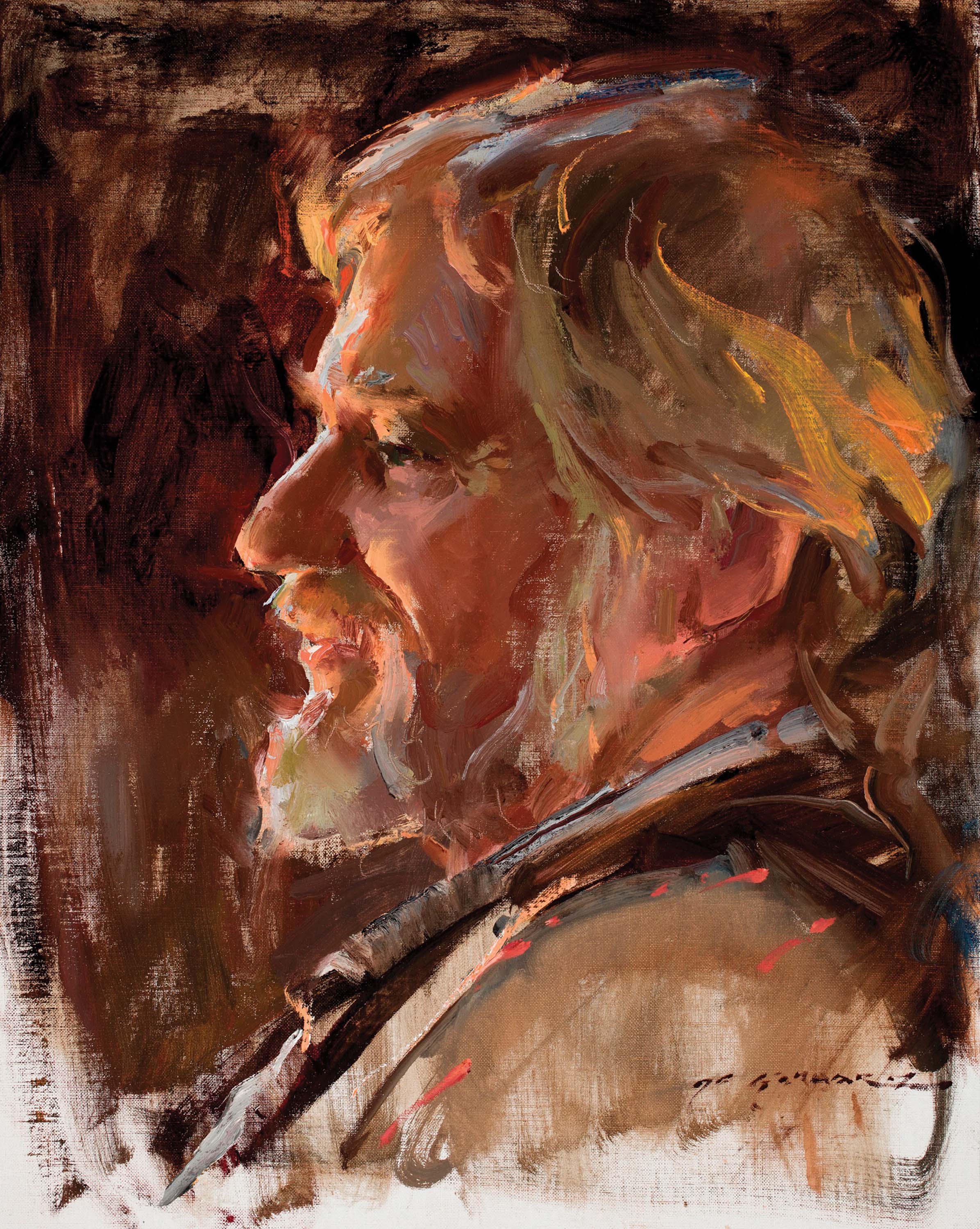
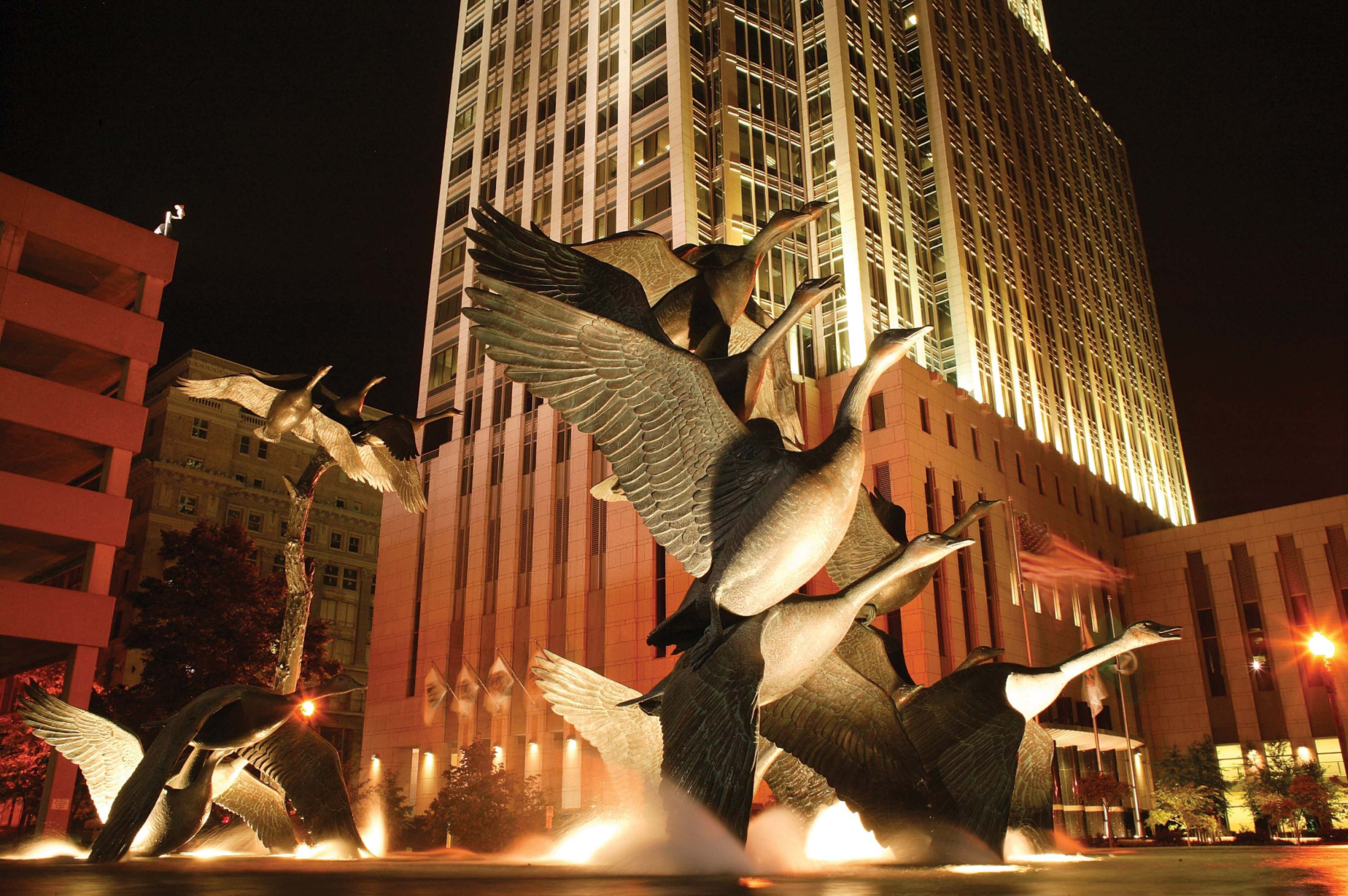
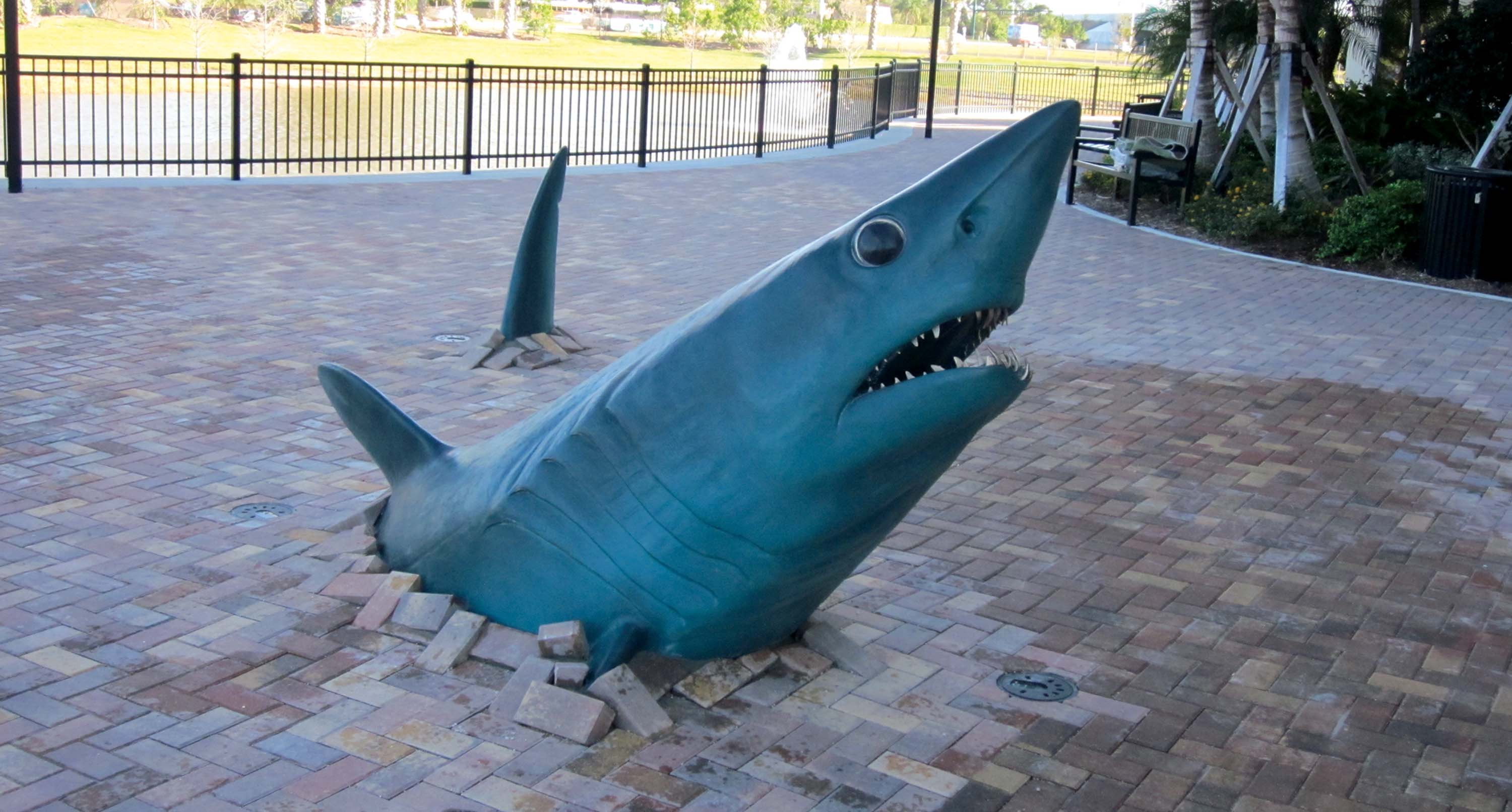
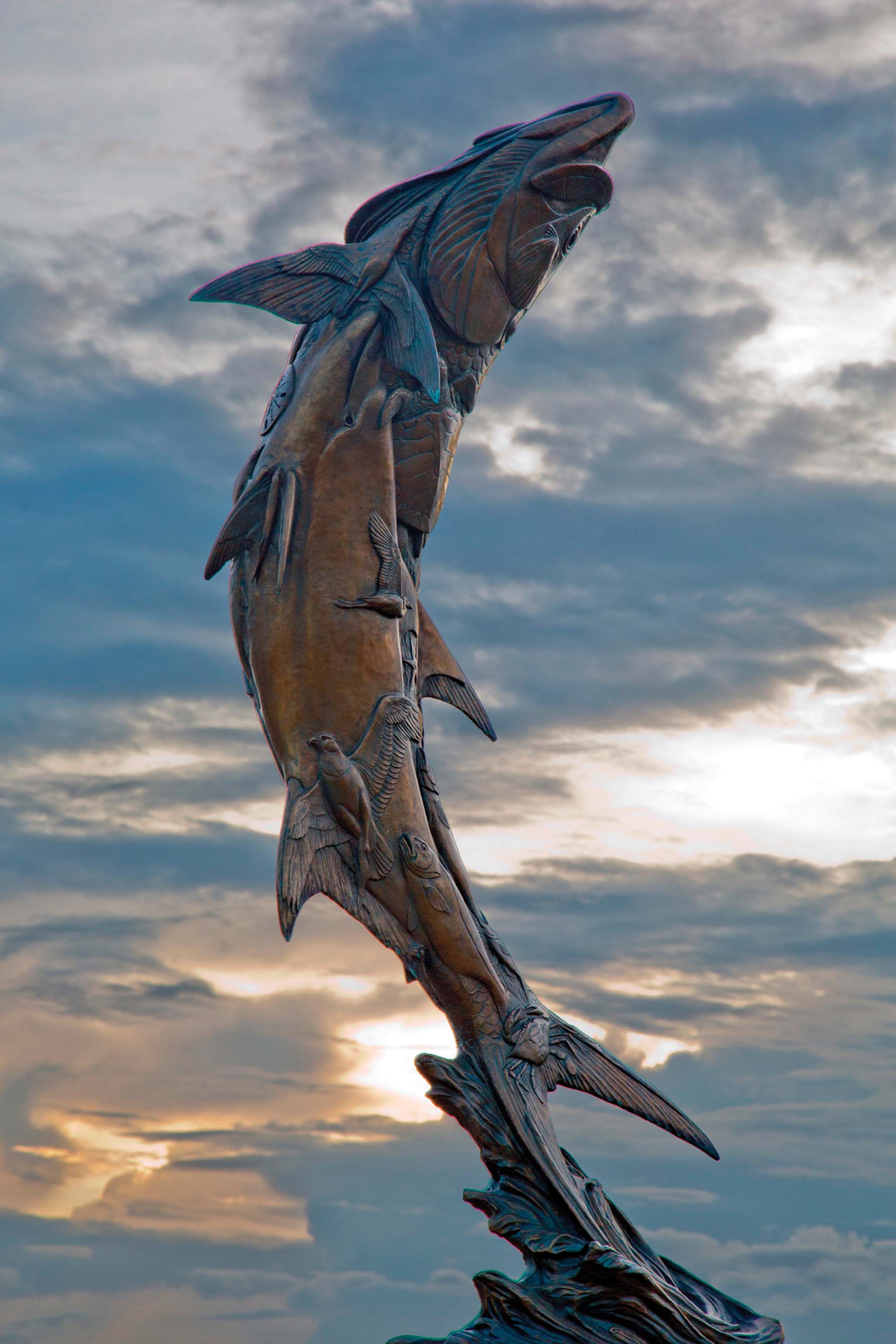
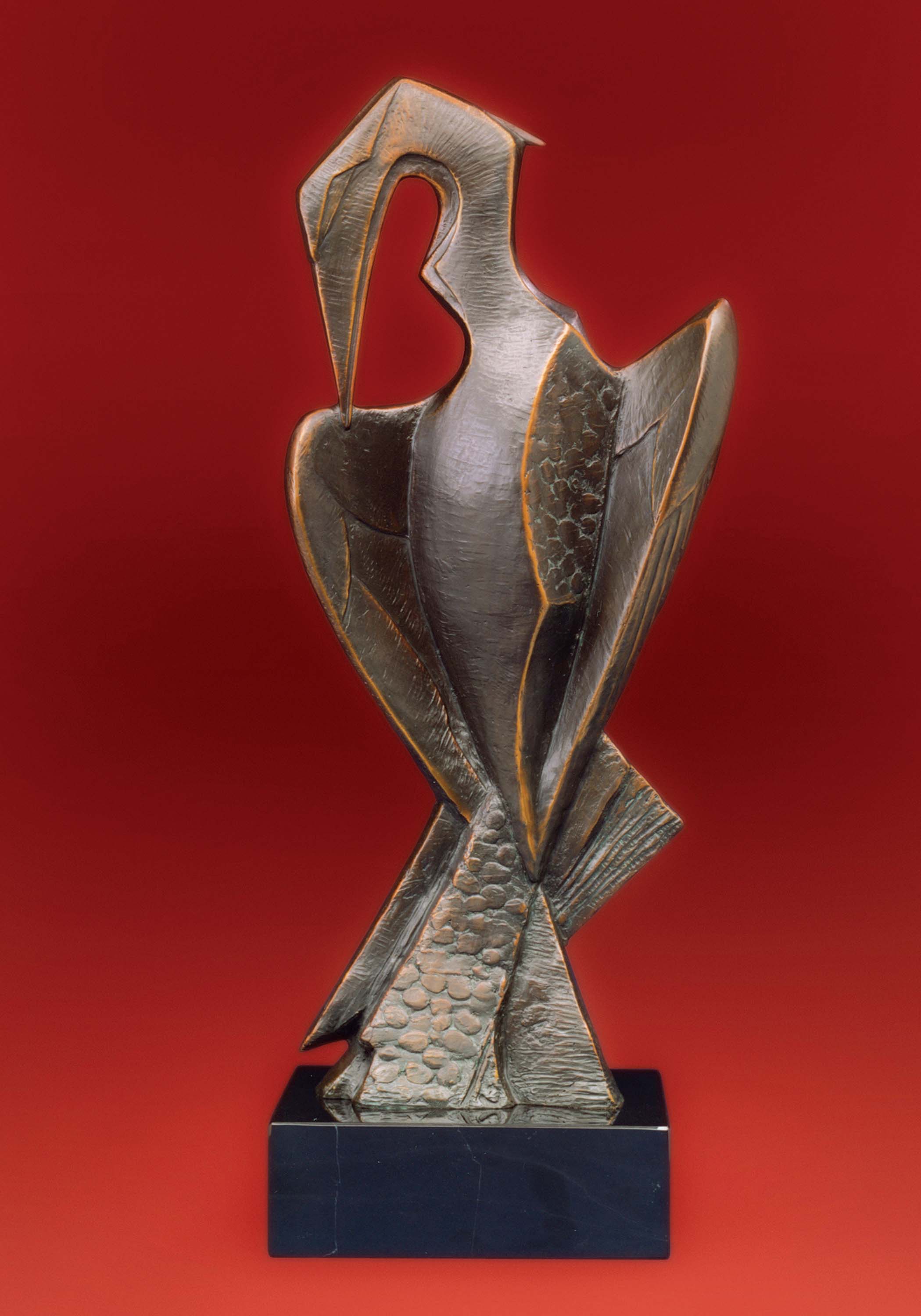
No Comments